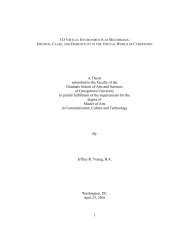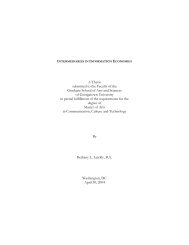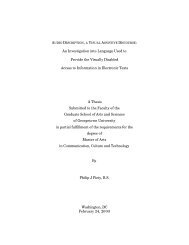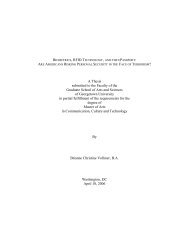A Comparative Case Study of Global Marketing and Ethnocentrism ...
A Comparative Case Study of Global Marketing and Ethnocentrism ...
A Comparative Case Study of Global Marketing and Ethnocentrism ...
Create successful ePaper yourself
Turn your PDF publications into a flip-book with our unique Google optimized e-Paper software.
marketing is origniating (United States), the culture the marketing is directed toward<br />
(Brazil), <strong>and</strong> the marketing medium (the Internet).<br />
Measurement Scale<br />
The most well known scale to measure ethnocentrism is the CETSCALE<br />
developed in 1987 by Shimp <strong>and</strong> Sharma. The 17 item scale was rigorously<br />
formulated, refined <strong>and</strong> validated in the United States, <strong>and</strong> was subsequently applied<br />
<strong>and</strong> validated internationally (B<strong>and</strong>yopadhyay <strong>and</strong> Muhammad sbaer.uca.edu). The<br />
acronym st<strong>and</strong>s for Consumer Ethnocentric Tendencies Scale, <strong>and</strong> was designed as a<br />
way to measure consumer ethnocentric tendencies related to purchasing foreign versus<br />
American made products. Shimp <strong>and</strong> Sharma wanted to formulate this concept to suit<br />
the marketing discipline, something that had not been done before (Mav<strong>and</strong>o <strong>and</strong> Tan<br />
1). Their construct involved normative beliefs in people’s buying behavior. They<br />
tested the hypothesis that U.S. consumers prefer not to buy foreign made products<br />
because ethnocentrism carries with it the notion <strong>of</strong> consumer's patriotic emotions. It is<br />
important to note that the reliability <strong>of</strong> the CETSCALE is extremely high. Validity<br />
testing included panel screening, two purification studies, refinement (consisting <strong>of</strong> 25<br />
items), <strong>and</strong> finally an aggregate test that deemed the 17 items acceptable as they<br />
satisfied the .5 reliability criterion (Shimp <strong>and</strong> Sharma 282).<br />
This methodology does not use the CETSCALE directly but rather a<br />
modification <strong>of</strong> the CETSCALE. This hypothesis is testing reverse ethnocentrism, a<br />
31






